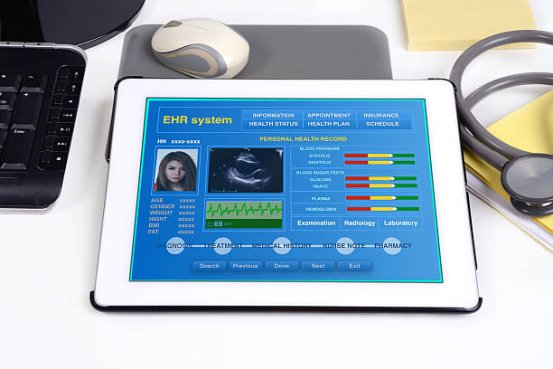Choosing the Right EHR: From Small Clinics to Large Health Systems
Selecting an appropriate electronic health record (EHR) system is crucial for medical practices of all sizes, as it directly impacts patient care, workflow efficiency, and staff productivity. Small and medium practices must carefully evaluate functionality, integration, cost, and usability to ensure the system aligns with both current needs and future growth.
Selecting an appropriate electronic health record (EHR) system is crucial for medical practices of all sizes, as it directly impacts patient care, workflow efficiency, and staff productivity. Small and medium practices must carefully evaluate functionality, integration, cost, and usability to ensure the system aligns with both current needs and future growth.

Maximizing the Benefits of EHR Systems for Small Practices
Cloud-based EHR platforms have become essential for small practices, providing streamlined workflows, improved patient engagement, and better overall operational efficiency. These systems simplify daily tasks, reduce administrative burden, and enable teams to focus on patient care rather than manual paperwork.
1. The Growing Role of Cloud-Based EHRs in Smaller Practices
Across the United States, small medical practices are increasingly turning to cloud-based EHR systems. These solutions provide intuitive interfaces, simplifying onboarding and daily management. This adoption allows small teams to function efficiently without incurring the high costs typically associated with fully customized enterprise EHR systems.
2. Key Features Driving Adoption
Modern EHR systems include features such as e-prescribing, integrated billing and scheduling, and robust patient portals. These functionalities improve patient engagement, streamline communication, and ensure compliance with regulatory standards like MACRA and MIPS. Emphasizing ease of use is critical, as complex or poorly integrated platforms can reduce productivity and increase staff fatigue.
3. Balancing Features and Affordability
Small practices need to find an optimal balance between essential functionalities and cost. Platforms that allow secure data sharing between healthcare providers are highly valued. Practice Fusion, for example, is popular among solo and small group practices due to its low cost, user-friendly interface, and core features that support essential clinical and administrative tasks.
4. Overview of EHR Solutions
| EHR Solution | Key Features | Best For | Pricing (USD) |
| Practice Fusion | Cloud-based, e-prescribing, scheduling, billing, clinical documentation, patient portal | Small & independent practices | Free/Low-cost |
| Meditech Expanse | Mobile access, customizable dashboards, clinical decision support, population health tools | Health systems | Not specified |
| TruBridge | Health records management, customizable workflows, reporting & analytics, picture archiving | Rural/community hospitals | On request |
This table highlights that EHR solutions are tailored to meet the diverse needs of small clinics, community hospitals, and large health systems.
Essential Features for Healthcare Providers in 2025
1. Customization and Integration
Modern providers require systems that can adapt to their workflows, offering customizable templates and seamless integration with practice management, billing, and telehealth tools.
2. Telehealth Functionality
Integrated telehealth features, including video consultations and screen sharing, are increasingly essential for patient care and remote consultations.
3. Behavioral Health Specialization
EHR templates aligned with DSM-5 and ICD-10 help behavioral health providers improve documentation, treatment planning, and patient outcomes.
4. E-Prescribing and Billing Integration
Streamlined workflows, faster reimbursements, and enhanced patient engagement are achieved through automated e-prescribing and billing functionalities.
5. Mobile Access and Customer Support
Providers benefit from multi-device access, flexible workflows, and responsive support to maximize system usability and efficiency.
Optimizing EHR Investments: Cost vs. Capability
1. High-End vs. Budget Systems
Systems like Epic, Athenahealth, and Oracle Health provide robust analytics and customization but are often cost-prohibitive for smaller practices.
2. Cloud-Based Advantages
Cloud solutions such as Practice Fusion offer essential features at lower cost, enabling small practices to operate efficiently without excessive expense.
3. Considering Total Cost of Ownership
Implementation, training, subscription fees, and third-party integrations must be included when calculating total expenses to prevent surprises.
4. Open Source EHR Options
Open-source platforms can save significantly on licensing but require internal technical expertise for setup and maintenance.
5. Aligning EHR Capabilities with Practice Needs
The best EHR solutions align system functionality with workflow requirements, ensuring long-term return on investment and operational efficiency.
Workflow Integration and Efficiency
1. Evolving Market Requirements
Providers increasingly seek systems that integrate smoothly into daily operations rather than add administrative complexity.
2. Integration Features That Matter
Customizable templates, patient portals, telehealth, and drag-and-drop scheduling reduce repetitive tasks and improve operational efficiency.
3. Balancing Cost and Functionality
Platforms like CareCloud offer advanced customization and security suitable for medium-to-large practices, though setup and data migration may require additional effort.
4. Future Trends
Next-generation EHR systems will emphasize modular expansion, automation, user-friendly interfaces, and adaptive workflows to improve patient care and practice efficiency.
Q&A
Why are cloud-based EHRs gaining popularity? Simplified interfaces, essential features, cost-effectiveness, and ease of onboarding are key drivers.
Examples for different practice sizes? Practice Fusion (small practices), Meditech Expanse (health systems), TruBridge (rural/community hospitals).
Must-have 2025 features? Customization, integration, telehealth, DSM-5/ICD-10 templates, e-prescribing, mobile access, and strong support.
Cost vs. capability considerations? Evaluate total cost of ownership, open-source options, and alignment with operational needs.
Improving workflow efficiency? Select systems with telehealth integration, customizable templates, and scheduling tools to minimize repetitive administrative tasks.
References:
https://www.ehrinpractice.com/small-practice-ehrs.html
https://digitalhealth.folio3.com/blog/what-are-the-top-5-ehr-systems/
https://neklo.com/blog/best-ehr-software
